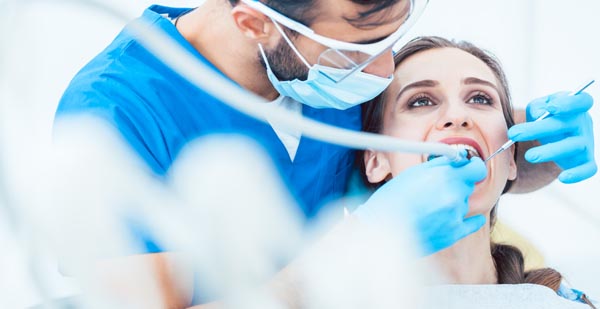Recovering From a Tooth Extraction in 90045

Although adult teeth are meant to last for a lifetime, tooth extraction is often necessary as people age. This may be for a number of reasons, including but not limited to tooth decay, trauma, a crowded mouth or a badly damaged tooth. If you recently had a tooth extracted, it is important to know what to expect in the aftermath and what you can do to speed up recovery.
Caring for the mouth after tooth extraction
When a dentist removes a tooth from a patient's mouth, it is the professional's responsibility to inform the patient of what needs to be done to help the mouth heal and ensure comfort throughout recovery. Typically, recovery from dental surgery of any kind takes seven to 10 days, as the mouth heals fairly quickly. However, if a person does not follow doctor's orders, recovery can take exponentially longer and be exponentially more painful than it needs to be.
To speed up healing time, the patient needs to keep the blood clot in place in the tooth socket, which can be done in a number of ways:
- Leave the gauze in place for at least three to four hours post-surgery
- Use an icepack immediately after surgery for 10 minutes at a time but not longer, as too much cold can cause tissue damage
- Rest for the 24 hours following surgery and limit activity in the days following
- Avoid using a straw, spitting or rinsing for 24 hours
- Once 24 hours has lapsed, rinse with salt water
- Do not smoke
- When sleeping, prop up the head using a pillow, as lying flat can delay healing
- To prevent infection, continue to brush and floss, but avoid the site of extraction
Tooth extraction patients should also take painkillers as recommended. If the pain does not subside within two to three days, patients are encouraged to contact their dentists. This is especially the case if the pain grows worse.
Eating post extraction
A large part of the healing process entails avoiding certain foods that may aggravate the extraction site. This eliminates most solids from the diet for at least in the week following the procedure. Dentists recommend patients eat soft foods such as yogurt, pudding, soup, applesauce and mushed-up veggies. Patients can also eat smoothies and milkshakes, though they should do so with a spoon, as straws can dislodge the clot. Only once the extraction site begins to heal can patients begin to incorporate solid foods back into their daily diets.
Outlook
If a patient follows the dentist's orders to a T, there is no reason the mouth should take longer than two weeks to heal. Once healed, the patient should be able to return to life as normal, including eating a healthy, wholesome diet of solid foods.
It is important to note that the teeth may shift after one is extracted, thereby affecting the bite. For this reason, patients are encouraged to discuss tooth replacement with the same dental professional who extracted the tooth. Tooth replacement options include dentures, a fixed bridge or implant.
Conclusion
Though individuals are likely to feel some degree of pain post-tooth extraction, there are steps dentists recommend to mitigate pain and speed up recovery. By following these orders, patients can avoid unnecessary complications.
Request an appointment here: https://mathewsdentalgroup.com or call Mathews Dental Group at (310) 412-9291 for an appointment in our Los Angeles office.
Check out what others are saying about our services on Yelp: Read our Yelp reviews.
Recent Posts
A dental emergency can strike at any time and with no warning. Perhaps a person is playing a game of touch football on Thanksgiving and a family member decides to up the ante and a tackle comes into play, accidentally knocking out two front teeth. Or maybe on vacation in the tropics, someone decides to…
The prospect of having a root canal probably will not get anyone excited. When you have severely decayed teeth or an infection in the roots or pulp, this procedure may be necessary. Though many people may have fears about this treatment, it can salvage teeth. Instead of having your dentist remove the affected tooth, you…
Partial dentures are used to replace missing teeth. They use replacement teeth that are attached to a gum-colored acrylic base or held in place by dental implants. Wearing new partial dentures means getting used to a little bit of oral discomfort as one’s mouth adjusts to the dentures. Fortunately, the discomfort does not last for…
Dental bonding is a common cosmetic dentistry procedure for repairing the teeth and restoring their appearance. The process involves the use of composite resin to repair or reshape the tooth. Composite resin is used because it bonds quickly with the tooth enamel. It is highly malleable, allowing the dentist to adjust it as necessary before…


